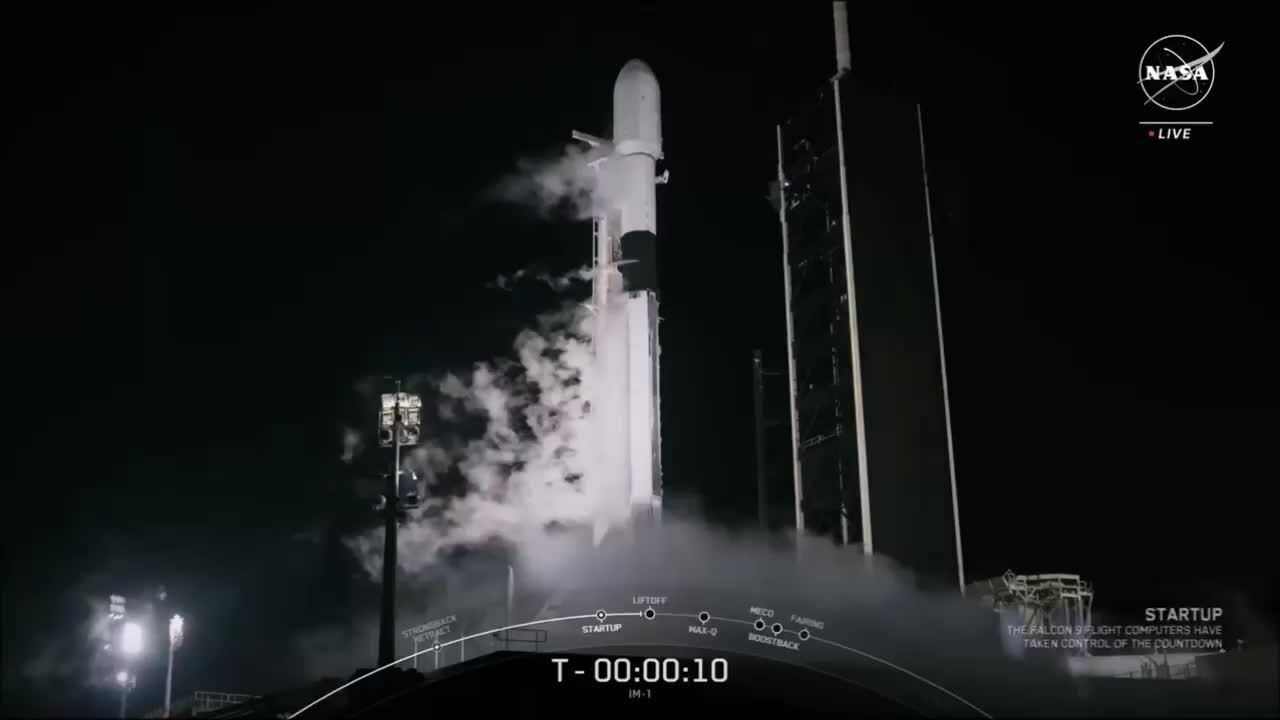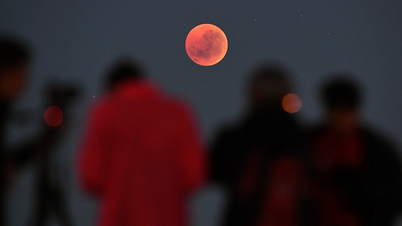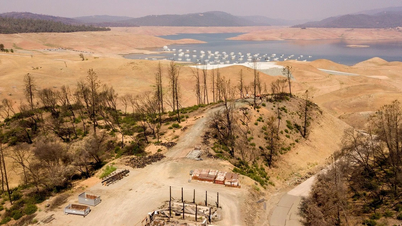The Odysseus lander, or Odie, lifted off on a SpaceX Falcon 9 rocket from Kennedy Space Center, Florida, at 1:05 p.m. today ( Hanoi time).
SpaceX rocket launches Odysseus lunar lander into space. Video : NASA/SpaceX
Odysseus, built by Houston-based Intuitive Machines, will land near the lunar south pole on February 22, becoming the first private spacecraft to successfully land on the celestial body. The success will also be significant for the United States, which has not returned to the lunar surface since NASA's Apollo 17 mission more than half a century ago.
About 7.5 minutes after launch, the first stage of the Falcon 9 rocket returned to Earth for a vertical landing at Cape Canaveral Space Force Station, Florida. This was the 18th launch and landing of this reusable rocket stage.
The lander weighs 675 kg and is about the size of a British telephone booth. It will now head towards lunar orbit, a journey that is expected to take about a week. Then Odysseus will prepare for its historic landing attempt. It is scheduled to touch down in Malapert A, a small crater about 300 km from the lunar south pole.
NASA will be closely monitoring the landing, as Odysseus carries a lot of the agency's equipment. NASA booked a spot on the craft through the Commercial Lunar Payload Services (CLPS) program, which aims to leverage the capabilities of private US landers to deliver scientific equipment to the Moon in a more cost-effective way.
These devices are designed to collect data to support NASA’s Artemis program, which aims to establish an astronaut base near the lunar south pole by the late 2020s. The region is thought to contain a lot of water ice, which could support astronauts on the lunar surface. The water ice could also be used to produce propellant, allowing spacecraft to refuel after leaving Earth.
Odysseus carries six NASA instruments, including a range of scientific instruments designed to test new technologies or assess the lunar environment, such as studying the soil during landing. The spacecraft also carries a variety of memorabilia, including sculptures depicting the phases of the moon, and technology from private companies, including Columbia Sportswear, which developed insulation for the lander.
If all goes according to plan, Odysseus will spend seven days operating on the Moon. But as the landing site gradually moves into the Earth's shadow, the spacecraft will be put to sleep during the lunar night.
Thu Thao (According to Space )
Source link




![[Photo] Keep your warehouse safe in all situations](https://vphoto.vietnam.vn/thumb/1200x675/vietnam/resource/IMAGE/2025/10/1/3eb4eceafe68497989865e7faa4e4d0e)


![[Photo] President of the Cuban National Assembly visits President Ho Chi Minh's Mausoleum](https://vphoto.vietnam.vn/thumb/1200x675/vietnam/resource/IMAGE/2025/10/1/39f1142310fc4dae9e3de4fcc9ac2ed0)
![[Photo] Hanoi morning of October 1: Prolonged flooding, people wade to work](https://vphoto.vietnam.vn/thumb/1200x675/vietnam/resource/IMAGE/2025/10/1/189be28938e3493fa26b2938efa2059e)
















![[INFOGRAPHIC] DJI Osmo Nano Action camera, super compact, 4K 120fps recording](https://vphoto.vietnam.vn/thumb/402x226/vietnam/resource/IMAGE/2025/10/1/8408489112ee446dab897373255c827e)









































































Comment (0)